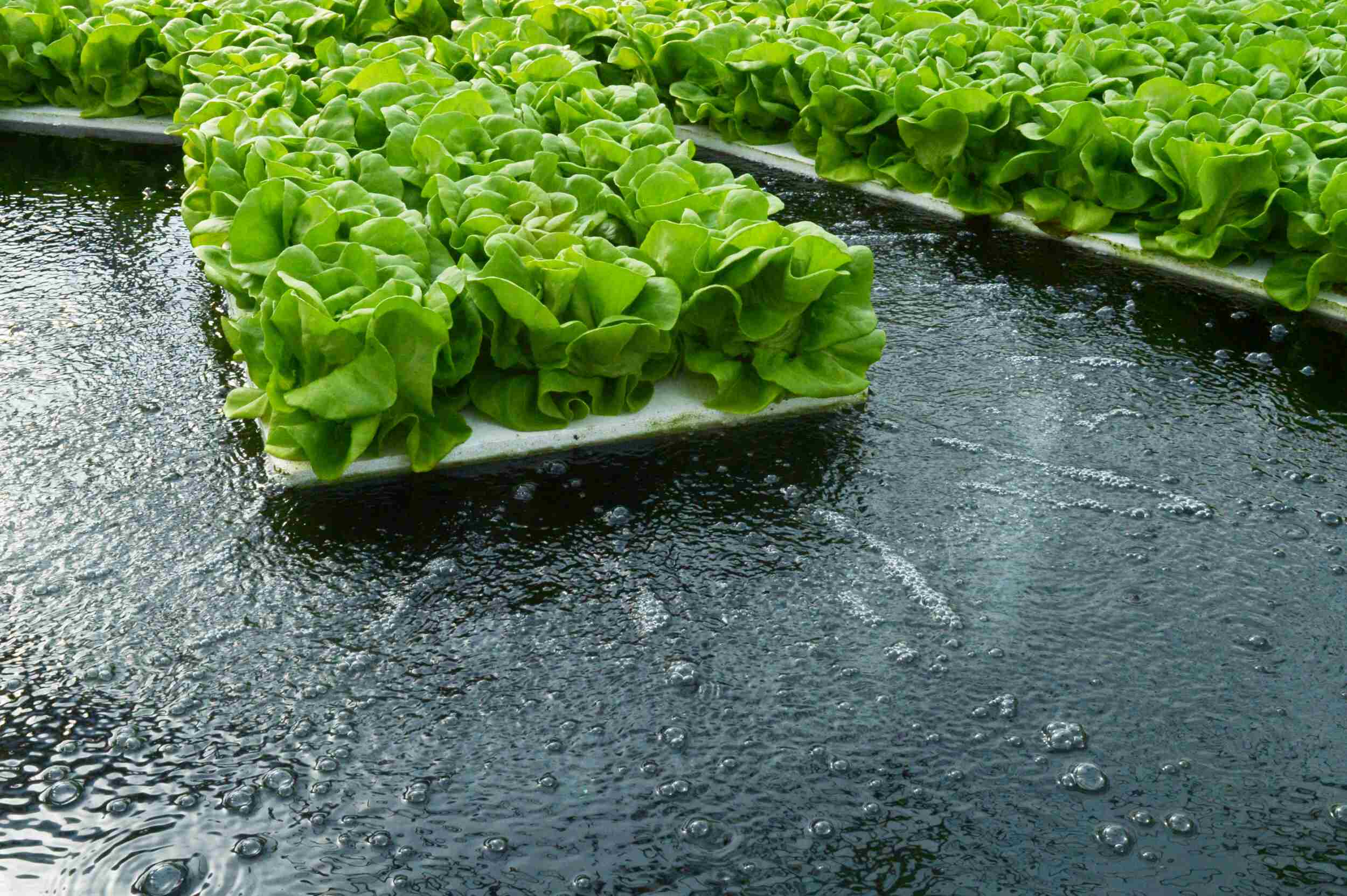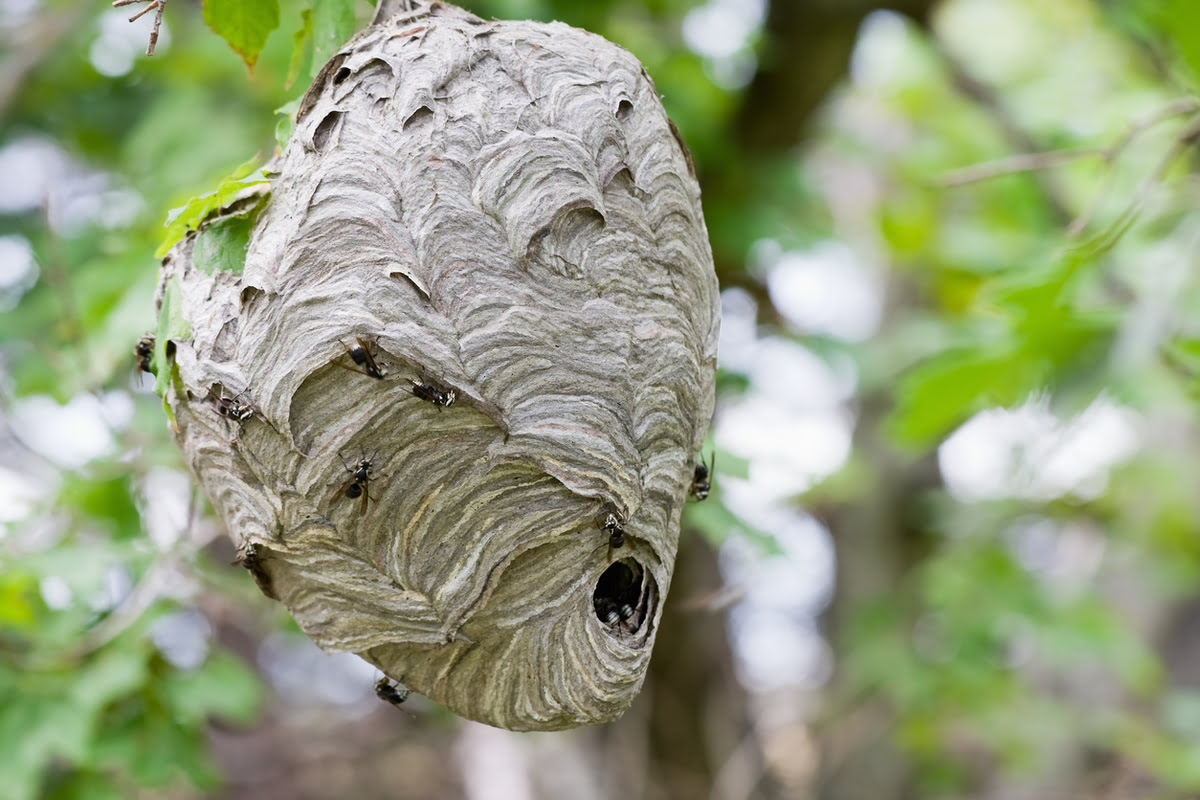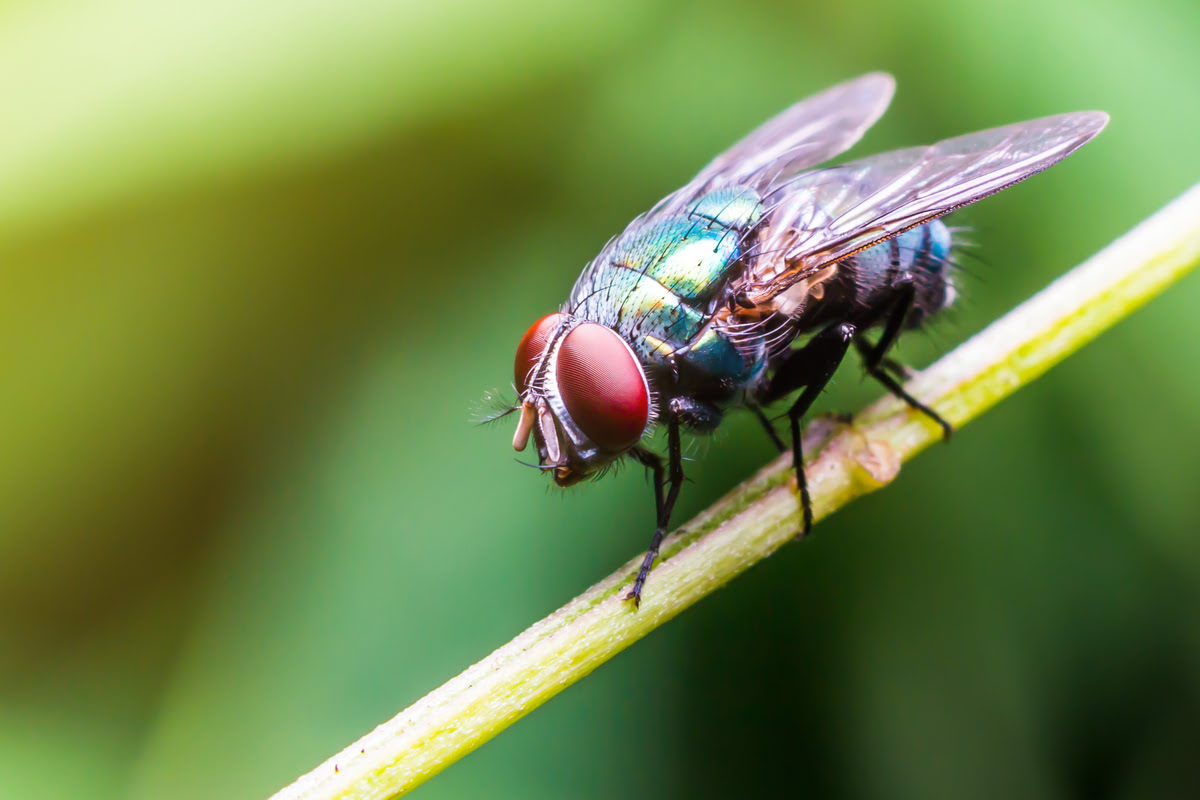Home>Gardening News and Trends>Latest News>What Makes Up The Outer Layer Of Some Insects?


Latest News
What Makes Up The Outer Layer Of Some Insects?
Modified: January 22, 2024
Discover the latest news on the outer layer of some insects. Find out what makes up this unique feature and how it contributes to their survival.
(Many of the links in this article redirect to a specific reviewed product. Your purchase of these products through affiliate links helps to generate commission for Chicagolandgardening.com, at no extra cost. Learn more)
Table of Contents
Introduction
Welcome to the fascinating world of insects, where nature has bestowed upon these tiny creatures a remarkable and unique adaptation – the exoskeleton. The exoskeleton acts as a protective outer layer for insects, providing support, defense, and a variety of other functions. It is a fascinating structure that enables insects to thrive in diverse environments and survive various challenges.
From the moment we observe an insect, we are captivated by its intricate design and astonishing abilities. The exoskeleton, with its rigid armor-like appearance, plays a crucial role in the insect’s survival. It serves multiple purposes, such as protecting the delicate internal organs, providing structural integrity, and facilitating movement.
This article will delve into the composition of the outer layer of insects, shedding light on the different components that make up their exoskeleton. We will explore the main component, chitin, as well as the outermost layer known as the epicuticle, the structural layer called the procuticle, and the wax layer that provides waterproofing. Additionally, we will examine the colors and patterns exhibited by some insects, as these also play a role in their outer layer.
By understanding the intricacies of the outer layer of insects, we gain insight into the remarkable adaptations and evolutionary strategies that have allowed them to thrive for millions of years. So, let us journey into the world of insects and unravel the mysteries of their exoskeleton.
Exoskeleton: A Protective Outer Layer
The exoskeleton is a fascinating feature that sets insects apart from other animals. Unlike humans and many other creatures, insects have their skeleton on the outside of their bodies rather than on the inside. This external skeleton, also known as the exoskeleton, serves as a protective outer layer.
The exoskeleton provides several key functions essential for an insect’s survival. Firstly, it acts as a shield, protecting the fragile internal organs from external threats. It serves as a physical barrier against predators, harsh weather conditions, and other potential dangers.
The exoskeleton also provides structural support. It gives insects the rigidity and stability needed for movement and allows them to resist forces such as gravity. This rigid outer layer is connected to the muscles and enables insects to move using a fascinating mechanism called an exoskeletal joint system.
Moreover, the exoskeleton serves as a barrier to dehydration. It prevents water loss by trapping moisture within the insect’s body, particularly in arid environments. This characteristic is crucial for the survival of certain insect species that inhabit dry regions where water is scarce.
Furthermore, the exoskeleton serves as a defense mechanism against microbial infections. Its outer layer acts as a physical barrier against pathogens, reducing the risk of infection and enhancing the insect’s overall immune response.
The exoskeleton is not a rigid, inflexible structure. It also acts as a dynamic and adaptable layer that allows for growth. Insects undergo a process called molting, where they shed their old exoskeleton and develop a new one. This mechanism enables insects to grow in size and accommodate their changing body structures throughout their lifecycle.
Overall, the exoskeleton is a remarkable adaptation that provides protection, support, and other essential functions for insects. Its unique characteristics enable these remarkable creatures to thrive and adapt to diverse environments and challenges they face.
Composition of the Exoskeleton
The exoskeleton of insects is made up of several key components that work together to form a formidable and versatile outer layer. Understanding the composition of the exoskeleton allows us to appreciate the intricacies of its structure and its critical role in an insect’s survival.
The main component of the exoskeleton is a substance called chitin. Chitin is a tough, flexible polysaccharide that provides strength and rigidity to the exoskeleton. It is similar in structure to the cellulose found in plant cell walls and the keratin found in the outer layer of our own skin and hair.
The chitin in an insect’s exoskeleton is organized into layers. The outermost layer, called the epicuticle, is the thinnest and serves as the first line of defense against external threats. It is composed of waxes and other substances that help reduce water loss and protect the insect from harmful microorganisms.
Beneath the epicuticle lies the procuticle, which is the structural layer of the exoskeleton. The procuticle is composed mainly of chitin fibers and proteins, giving it strength and flexibility. Depending on the insect species and its specific needs, the procuticle may vary in thickness and hardness.
Within the procuticle, there are two distinct layers called the exocuticle and the endocuticle. The exocuticle is the outermost portion and is thicker and harder than the endocuticle. It provides additional strength and protection to the exoskeleton. The endocuticle lies deeper within and is softer and more flexible, allowing for movements.
In addition to chitin, the exoskeleton may also contain other substances such as minerals and proteins. These components contribute to the overall mechanical properties of the exoskeleton, making it a durable and resilient structure.
The composition of the exoskeleton varies among different insect species and even within different body regions of the same insect. This versatility allows for specialization based on the insect’s needs, such as enhanced protection for certain body parts or adaptations to specific habitats.
Understanding the composition of the exoskeleton provides insights into how insects have evolved and adapted to survive in different environments. It showcases the remarkable complexity and versatility of these tiny creatures and their incredible ability to thrive in a world that is constantly changing.
Chitin: The Main Component
Chitin is the primary component of the exoskeleton in insects and plays a vital role in providing strength, flexibility, and other essential characteristics to this outer layer. It is a polysaccharide, a complex carbohydrate that consists of repeating units of a sugar called N-acetylglucosamine.
This remarkable substance is incredibly sturdy and resilient, making it ideal for forming the rigid structure of an insect’s exoskeleton. The arrangement of chitin molecules gives the exoskeleton its strength, allowing it to resist external forces and provide protection to the insect’s body.
Chitin is an incredibly versatile compound that can be found in various forms across the animal kingdom. In addition to insects, it is also a key component of the external structures in other arthropods like crustaceans and arachnids. It even plays a role in the cell walls of fungi, providing rigidity and protection.
One of the unique properties of chitin is its ability to undergo modifications, such as cross-linking or chemical modifications, to alter its physical properties. These modifications can affect the hardness, flexibility, or water resistance of the exoskeleton, allowing insects to adapt to different environmental conditions.
Despite its toughness, chitin is not an inflexible material. It possesses a certain level of flexibility that enables an insect to move and perform necessary actions. This flexibility is crucial for their survival, as it allows them to navigate their surroundings, find food, and engage in other essential behaviors.
Furthermore, chitin provides a level of protection against mechanical damage. It helps absorb and distribute forces on the exoskeleton, reducing the risk of fractures or injuries. This benefit is especially important during activities such as flight or when insects need to withstand impacts from predators or environmental hazards.
The presence of chitin in the exoskeleton also facilitates the process of molting. When insects grow, their exoskeleton becomes too tight, restricting further development. To accommodate their increasing size, insects must molt, shedding their old exoskeleton and forming a new one. Chitin provides the flexibility for this process, allowing insects to safely shed their old exoskeleton and expose the new, larger exoskeleton underneath.
Overall, chitin is the main component of the exoskeleton in insects, providing strength, flexibility, and protection. Its remarkable properties enable insects to thrive in diverse environments and adapt to the challenges they face throughout their lifecycle.
Epicuticle: The Outermost Layer
The epicuticle is the outermost layer of the exoskeleton in insects, serving as the first line of defense against external threats. It is a thin, waxy layer that covers the entire surface of the insect’s body and plays a crucial role in protecting and sealing the exoskeleton.
The epicuticle is primarily composed of lipids, waxes, and other hydrophobic substances. These substances help reduce water loss, preventing desiccation and maintaining the insect’s internal moisture levels. This barrier is particularly important for insects living in arid environments, where water conservation is a critical factor for survival.
One of the primary functions of the epicuticle is to protect the insect from harmful microorganisms. The waxy layer acts as a physical barrier, preventing the entry of bacteria, fungi, and other pathogens from penetrating the exoskeleton. Additionally, some hydrophobic compounds found in the epicuticle have antimicrobial properties, further enhancing the insect’s immune defense.
The epicuticle also contributes to the insect’s ability to navigate through its environment. It allows insects to move smoothly over surfaces, reducing friction. This property is especially crucial for aerial insects, such as bees or butterflies, as they rely on efficient flight and need to minimize air resistance.
Moreover, the epicuticle can play a role in the insect’s social interactions and communication. Some insects release pheromones, chemical signals that help attract mates, establish territories, or communicate important information to other individuals. The waxy layer of the epicuticle can help retain these pheromones, allowing the insect to effectively communicate with others of its species.
In addition to its functional roles, the epicuticle can exhibit coloration or patterns that play a role in the insect’s camouflage or warning signals. Some insects have evolved to have patterns or markings on their epicuticle that help them blend into their surroundings or discourage potential predators. These patterns can also serve as a visual signal, warning predators of the insect’s toxicity or unpleasant taste.
Overall, the epicuticle is a vital component of the exoskeleton, providing protection, water resistance, and various other functions. Its composition and structure allow insects to thrive in diverse environments, defend against microorganisms, and interact with their surroundings in fascinating ways.
Procuticle: The Structural Layer
The procuticle is the structural layer of the exoskeleton found beneath the epicuticle in insects. It is responsible for providing strength, flexibility, and structural integrity to the overall exoskeleton.
The procuticle is composed primarily of chitin, a tough and flexible polysaccharide. The arrangement of chitin fibers within the procuticle gives it its mechanical properties, allowing it to resist external forces and provide support to the insect’s body.
There are two distinct layers within the procuticle: the exocuticle and the endocuticle. The exocuticle is the outermost portion and is generally thicker and harder than the endocuticle. It provides additional strength and protection to the exoskeleton.
The exocuticle consists of densely packed chitin fibers, which are reinforced with other proteins and may also contain mineral deposits. The presence of minerals, such as calcium carbonate or magnesium, adds rigidity to the exocuticle, making it stronger and more resistant to mechanical stress.
Beneath the exocuticle lies the endocuticle, which is generally softer and more flexible. The endocuticle consists of a looser arrangement of chitin fibers and contains more water than the exocuticle. This flexibility allows for easier movement and bending of the exoskeleton during various activities.
The procuticle serves as the main load-bearing structure of the exoskeleton. It allows insects to withstand external forces, such as impacts or body movements, without experiencing excessive deformation or damage. The combination of chitin fibers, proteins, and minerals in the procuticle provides the ideal balance of strength and flexibility needed for an insect’s activities.
During molting, the procuticle is shed along with the epicuticle, allowing the insect to grow and develop a new exoskeleton. The process of molting involves the synthesis of a new procuticle and the breakdown and reabsorption of the old exoskeleton. This allows insects to accommodate their increasing size and adapt to changes throughout their lifecycle.
Overall, the procuticle plays a crucial role in providing structural support, strength, and flexibility to the exoskeleton. Its composition and arrangement of chitin fibers, along with the presence of proteins and minerals, allow insects to maintain their shape and perform essential activities throughout their lives.
Wax Layer: Adding Waterproofing
The wax layer is a vital component of the exoskeleton in insects, providing waterproofing and preventing excessive water loss. It is a thin coating that covers the outer surface of the exoskeleton, enhancing the insect’s ability to survive in various aquatic and terrestrial environments.
The wax layer consists of hydrophobic compounds, primarily long-chain fatty acids and esters. These compounds repel water, preventing it from penetrating the exoskeleton and leading to dehydration. The wax layer acts as a barrier, reducing the loss of moisture from the insect’s body and maintaining proper hydration levels.
This waterproofing ability is especially crucial for insects that live in or around water, such as aquatic insects or those that inhabit moist environments. Without the wax layer, these insects would quickly lose water through their exoskeleton and struggle to survive in their respective habitats.
In addition to preventing water loss, the wax layer also helps protect the exoskeleton from damage caused by external elements. It acts as a shield against chemicals, pollutants, and harmful substances present in the environment. The wax layer provides a barrier that prevents these substances from reaching the underlying layers of the exoskeleton, minimizing their potential harmful effects.
Furthermore, the wax layer can play a role in reducing friction and improving an insect’s ability to move. It allows insects to navigate through their environment more efficiently by reducing surface tension and minimizing contact with the surrounding surfaces.
The composition and structure of the wax layer can vary among different species of insects. Some insects have wax layers that are smooth and even, while others may have wax structures that create intricate patterns or provide additional defense against predators.
Overall, the wax layer in the exoskeleton contributes significantly to an insect’s ability to maintain proper hydration levels and resist water-related challenges. Its hydrophobic properties, along with its protective function, allow insects to thrive in diverse environments and exhibit remarkable adaptations that contribute to their survival.
Colors and Patterns: Pigments and Structural Coloration
The colors and patterns exhibited by insects are not simply for aesthetic purposes; they serve important functions in communication, camouflage, and even defense. Insects employ a variety of mechanisms to generate these captivating colors, including pigments and structural coloration.
Pigments are chemical substances that absorb and reflect specific wavelengths of light, giving rise to different colors. These pigments can be synthesized by specialized cells called chromatophores, which are responsible for producing the vivid hues seen in insects. Some common pigments found in insect exoskeletons include melanin (which produces black, brown, or dark colors), carotenoids (responsible for red, orange, or yellow hues), and pteridines (associated with yellow, orange, and red colors).
However, not all colors in insects are produced solely by pigments. Structural coloration is another mechanism insects use to generate vibrant and iridescent hues without the need for pigments. Instead, structural coloration relies on the physical structure of the exoskeleton to scatter and reflect light, resulting in various colors and optical effects.
Structural coloration can be achieved through microscopic structures in the exoskeleton, such as ridges, grooves, or thin layers that interfere with light waves. These structures create constructive or destructive interference, leading to an array of colors and visual effects. For example, structural coloration is responsible for the shimmering hues in butterfly wings, the metallic sheen of beetles, and the iridescence seen in certain ants and bees.
In addition to producing vibrant colors, the various colors and patterns in an insect’s exoskeleton also serve specific purposes. Camouflage is one such function, as insects use colors and patterns to blend into their surroundings, making it difficult for predators to spot them. Some insects may mimic their environment, such as tree bark or leaves, while others exhibit disruptive patterns that confuse predators or create the illusion of movement.
Coloration can also play a role in species recognition and mate selection. In many insect species, bright and contrasting colors are used to attract potential mates and signal reproductive readiness. This visual display helps individuals of the same species recognize each other and ensure successful reproduction.
Furthermore, certain insects have evolved warning colors to advertise their toxicity or unpalatability to potential predators. These warning colors, often bold and contrasting, serve as a visual deterrent, signaling to predators that attacking or consuming the insect would be a harmful or unpleasant experience.
Insects have evolved a remarkable variety of colors and patterns, both through pigments and structural coloration, to fulfill numerous functions in their lives. Understanding the mechanisms behind these vibrant displays enhances our appreciation for the complexity and adaptability of these remarkable creatures.
Conclusion
The outer layer of insects, known as the exoskeleton, is a remarkable adaptation that provides protection, support, and various other functions. Composed primarily of chitin, the exoskeleton forms a rigid and durable structure that helps insects thrive in diverse environments.
The exoskeleton is comprised of different layers, each with its unique properties. The epicuticle, the outermost layer, acts as a waterproof barrier, protecting insects from dehydration and microorganisms. Beneath it, the procuticle provides structural integrity, with the exocuticle offering strength and protection, and the endocuticle granting flexibility.
In addition to the structural components, insects also utilize a wax layer to enhance waterproofing and prevent excessive water loss. Colors and patterns displayed on the exoskeleton, generated either through pigments or structural coloration, serve essential functions such as communication, camouflage, and defense.
Understanding the intricacies of the outer layer of insects allows us to appreciate the remarkable adaptations and evolutionary strategies that have allowed them to thrive for millions of years. From the strength and flexibility of chitin to the diverse colors and patterns exhibited, the exoskeleton showcases the incredible diversity and ingenuity found in the insect world.
Continued research into the composition and functionality of the exoskeleton can unveil even more discoveries about these fascinating creatures. By unraveling the secrets of the exoskeleton, we gain insights into the remarkable adaptations and survival mechanisms that have enabled insects to conquer various habitats and overcome countless challenges.
So, the next time you encounter an insect, take a moment to marvel at its exoskeleton – a masterful creation that protects, supports, and captivates us with its complexity and beauty.










